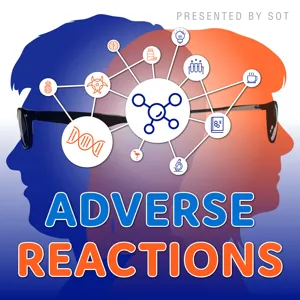The United States of Toxicity

Retired National Institute of Environmental Health Sciences (NIEHS) Director and lifelong federal scientist Linda S. Birnbaum discusses the intersection of policy and science, as well as the effect of environmental exposures on public health, with co-hosts Anne Chappelle and David Faulkner. Dr. Birnbaum also shares her insights on how to be an effective leader and the importance of mentorship.
About the Guest
Linda S. Birnbaum, PhD, DABT, ATS, is the former Director of the National Institute of Environmental Health Sciences (NIEHS) of the National Institutes of Health (NIH), and the National Toxicology Program (NTP). After retirement, she was granted scientist emeritus status and still maintains a laboratory. As a board-certified toxicologist, Dr. Birnbaum served as a federal scientist for 40 years. Before her appointment as NIEHS and NTP Director in 2009, she spent 19 years at the US Environmental Protection Agency (US EPA), where she directed the largest division focusing on environmental health research.
Dr. Birnbaum has received many awards and recognitions. In 2016, she was awarded the North Carolina Award in Science. She was elected to the Institute of Medicine of the National Academies, one of the highest honors in the fields of medicine and health. She was also elected to the Collegium Ramazzini, an independent, international academy composed of internationally renowned experts in the fields of occupational and environmental health, and received an honorary Doctor of Science from the University of Rochester and a Distinguished Alumna Award from the University of Illinois. Dr. Birnbaum also has received honorary doctorates from Ben-Gurion University in Israel, Amity University in India, and the University of Rhode Island; the Surgeon General’s Medallion 2014; and 14 Scientific and Technological Achievement Awards, which reflect the recommendations of the US EPA external Science Advisory Board, for specific publications.
Dr. Birnbaum is an active member of the scientific community. She was Vice President of the International Union of Toxicology (IUTOX), the umbrella organization for toxicology societies in more than 50 countries, and she is a Past President of the Society of Toxicology (SOT), the largest professional organization of toxicologists in the world. She is the author of more than 800 peer-reviewed publications, book chapters, and reports.
Dr. Birnbaum’s research focuses on the pharmacokinetic behavior of environmental chemicals, mechanisms of action of toxicants including endocrine disruption, and linking real-world exposures to health effects. She is an Adjunct Professor in the Gillings School of Global Public Health, the Curriculum in Toxicology, and the Department of Environmental Sciences and Engineering at the University of North Carolina at Chapel Hill, as well as in the Integrated Toxicology and Environmental Health Program at Duke University, where she also is a Scholar in Residence.
A native of New Jersey, Dr. Birnbaum received her MS and PhD in microbiology from the University of Illinois at Urbana-Champaign.
Disclaimer
The viewpoints and information presented in Adverse Reactions represent those of the participating individuals. Although the Society of Toxicology holds the copyright to the production, it does not vet or review the information presented, nor does presenting and distributing the Adverse Reactions podcast represent any proposal or endorsement of any position by the Society.



